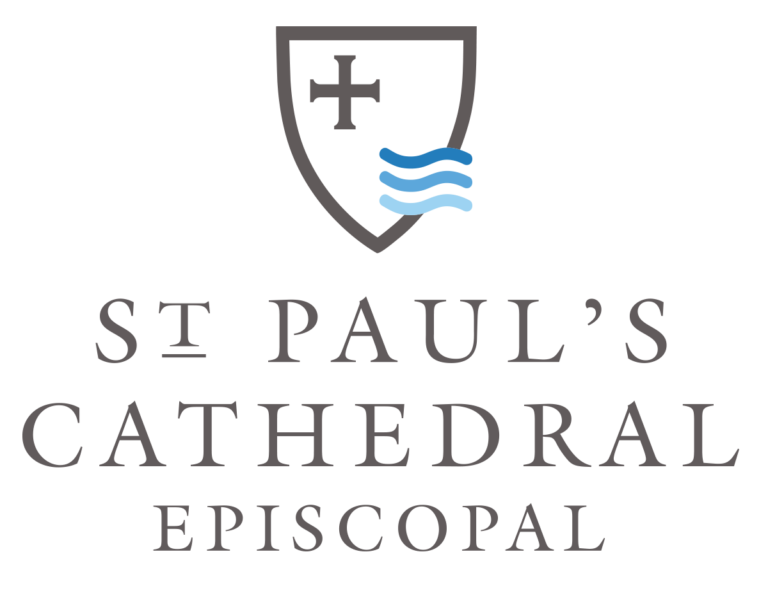Dear St. Paul’s family,
A couple of weeks ago Chapter adopted a plan to move us to a
balanced budget in 2020. You heard about the details at the Community Life
Council meeting and in a letter I sent out to the congregation. Now we are
beginning the process of implementing the plan, working into it gradually to
minimize anxiety and disruption.
balanced budget in 2020. You heard about the details at the Community Life
Council meeting and in a letter I sent out to the congregation. Now we are
beginning the process of implementing the plan, working into it gradually to
minimize anxiety and disruption.
One of the plan’s elements involves reducing our dependence
on paper service bulletins and re-engaging with our Book of Common Prayer and
Hymnal. As a first step in that direction, I want to encourage you to pick up
the prayer book in the pew in front of you, whenever you happen to be in the
nave. Take a look at the table of contents. Notice how it’s laid out in
sections: first, the calendar of the church year (as it stood when this
particular copy was printed – we add to it every three years); then prayers for
daily devotions that you can do at home (including The Daily Office); then The
Great Litany (the first portion of the Book of Common Prayer to be composed in
the 16th century). Next you have the Collects, or prayers for each
Sunday and holy day of the year, in traditional and contemporary language. See
if you can find the contemporary Collect for today, the third Sunday of Easter*.
Proper Liturgies for Special Days go from Ash Wednesday to the Great Vigil and
lead into Holy Baptism, then Eucharist in its several forms. Pastoral Offices
include rites of passage such as confirmation and burial. Episcopal Services
are those that require the presence of a Bishop.
on paper service bulletins and re-engaging with our Book of Common Prayer and
Hymnal. As a first step in that direction, I want to encourage you to pick up
the prayer book in the pew in front of you, whenever you happen to be in the
nave. Take a look at the table of contents. Notice how it’s laid out in
sections: first, the calendar of the church year (as it stood when this
particular copy was printed – we add to it every three years); then prayers for
daily devotions that you can do at home (including The Daily Office); then The
Great Litany (the first portion of the Book of Common Prayer to be composed in
the 16th century). Next you have the Collects, or prayers for each
Sunday and holy day of the year, in traditional and contemporary language. See
if you can find the contemporary Collect for today, the third Sunday of Easter*.
Proper Liturgies for Special Days go from Ash Wednesday to the Great Vigil and
lead into Holy Baptism, then Eucharist in its several forms. Pastoral Offices
include rites of passage such as confirmation and burial. Episcopal Services
are those that require the presence of a Bishop.
One of my favorite portions of the Prayer Book is the Book
of Psalms, which we include in its entirety – no other denominational worship
book does this. You can find a psalm for every emotion and situation of the
human condition: I encourage you to browse the Psalms! A collection of prayers
and thanksgivings for every occasion follows; then the Catechism, and then some
of the most significant historical documents of our tradition. Finally there are
instructions for how to figure out the date of Easter; the Lectionary,
including readings assigned for each Sunday and holy day of the year; and the
Daily Office Lectionary for morning and evening prayer every day. With a Book
of Common Prayer in one hand and a Bible in the other, you have everything you
need for worship as an Episcopalian.
of Psalms, which we include in its entirety – no other denominational worship
book does this. You can find a psalm for every emotion and situation of the
human condition: I encourage you to browse the Psalms! A collection of prayers
and thanksgivings for every occasion follows; then the Catechism, and then some
of the most significant historical documents of our tradition. Finally there are
instructions for how to figure out the date of Easter; the Lectionary,
including readings assigned for each Sunday and holy day of the year; and the
Daily Office Lectionary for morning and evening prayer every day. With a Book
of Common Prayer in one hand and a Bible in the other, you have everything you
need for worship as an Episcopalian.
If you’re feeling ambitious, pick up a copy of the Hymnal
1982 and see if you notice a similar pattern in the table of contents to that
of the prayer book. It’s no accident that they follow roughly the same
sequence.
1982 and see if you notice a similar pattern in the table of contents to that
of the prayer book. It’s no accident that they follow roughly the same
sequence.
The Book of Common Prayer is a treasure, and it’s worth
getting to know it intimately. Every Episcopalian should have a personal copy,
and I recommend getting the combined Prayer Book and Hymnal edition for ease of
use.
getting to know it intimately. Every Episcopalian should have a personal copy,
and I recommend getting the combined Prayer Book and Hymnal edition for ease of
use.
Your sister in Christ,
Penny
*hint: page 224

